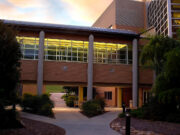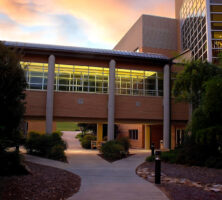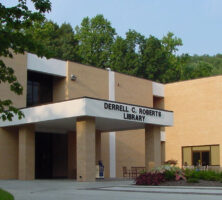Dalton State College is one of two units of the University System of Georgia offering a range of academic programs from the career certificate to the four-year baccalaureate degree. Located in Dalton, the seat of Whitfield County, the college primarily serves a ten-county area in northwest Georgia.
History
The chartering of Dalton Junior College by the Board of Regents in July 1963 fulfilled a century-long desire in the Dalton community for a local institution of higher learning. Required to provide a site and to underwrite initial construction of the campus, the voters of Whitfield County approved a $1.8 million bond issue in May 1965 by a margin of twenty-six to one. A tract of 136 acres was assembled on the western side of the Interstate 75 right-of-way, and construction of the first five buildings began in October 1966 under the supervision of the school’s newly appointed president, Arthur M. Gignilliat.
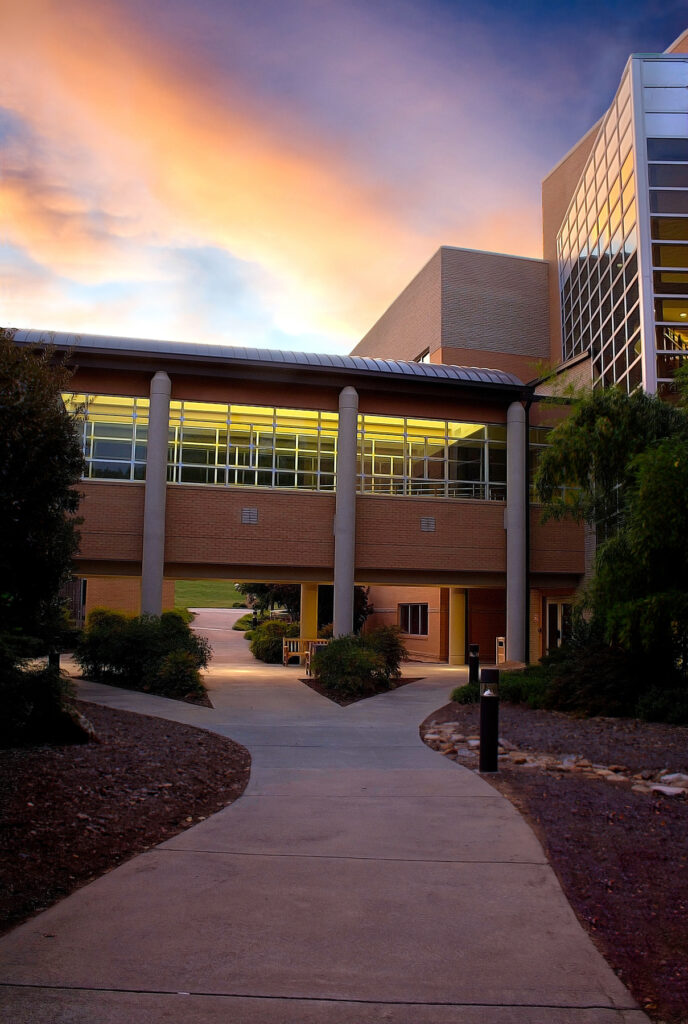
Courtesy of Dalton Convention and Visitors Bureau
Classes began in September 1967 with 524 students enrolled in programs designed to provide the first two years of college work in preparation for transfer to baccalaureate-granting institutions. In the fall of 1970 Gignilliat was succeeded by Derrell C. Roberts, whose long presidency, lasting until 1994, saw the school broaden its mission widely. The addition of a vocational and technical division in 1976 made it a comprehensive community college, able to serve nontransfer students wishing to develop work skills at the certificate or associate-degree level. Dalton became one of only four junior colleges in the University System with an integrated vocational/technical component. The Roberts era also produced a flourishing noncredit continuing-education program for personal development and recreation and for serving the needs of local business and industry.
Although the University System eliminated the classification “Junior” from its institutional nomenclature in 1987, the mission and functions of the school now known as Dalton Collegeremained unchanged. By then it enjoyed an enviable reputation for providing excellent education at a low cost. For many years its graduates’ performance on standardized examinations and at the institutions to which they transferred were among the highest posted by students from similar schools in the University System, although its per-student expenditures were among the lowest. Moreover, the college achieved this efficiency while assembling a superior library and providing up-to-date teaching resources. More than 90 percent of the college’s credit hours were taught by full-time faculty, many of whom possessed terminal degrees in their fields and who served the majority of their careers at Dalton; in 2001 the average length of service for full-time faculty members stood at 11.5 years.
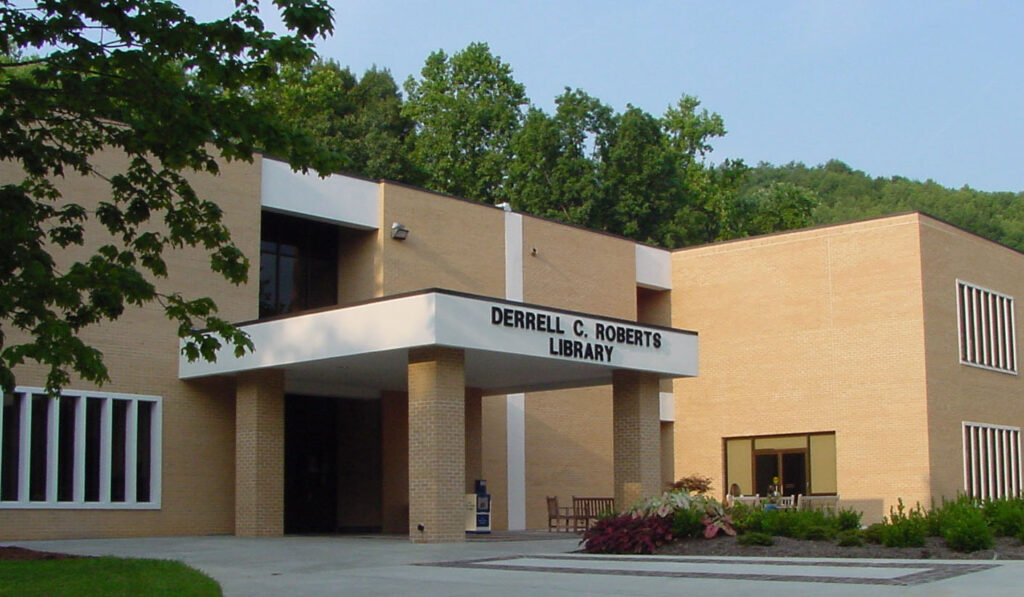
Courtesy of Dalton State College Office of Public Relations
In May 1995 James A. Burran became president and initiated a reassessment of the college’s place within the community and region. Extensive off-campus programs were developed in Catoosa, Gordon, and Pickens counties. Construction began in 1997 on a new building that doubled the college’s classroom space, and an enlargement of the library was completed in 2002.
The fall of 1998 saw a fundamental change in the college’s mission when the Board of Regents authorized development of the institution’s first baccalaureate degree programs, carefully targeted to the needs of the college’s primary service area. A year later three programs were in place, all in business and technology. In 2000 a baccalaureate program in social work was authorized, designed with special emphasis on serving the burgeoning Hispanic population of northwest Georgia. The college, now renamed Dalton State College, joined Macon State College in a niche between the public two-year institutions and the state universities.
Twenty-first Century
Located in a growing part of Georgia that was previously without easy access to a four-year school in the University System, Dalton State College by 2003 offered six bachelor’s degrees, forty-three transfer associate degrees, twenty-one career associate degrees, and forty-six career certificates and minicertificates. Of the 109 full-time faculty members, 54 percent held doctorates. Student enrollment totaled 4,134 in fall 2002 (an increase of 35 percent since 1999). The average age of Dalton State students was twenty-seven, and more than 90 percent came from the primary service area of Catoosa, Gordon, Murray, Walker, and Whitfield counties. Almost 93 percent of the students were white, reflecting the traditional Appalachian demographic pattern. Hispanics, though constituting only 5 percent of the student body in fall 2002, made up the largest nonwhite component. Their growing numbers in the community—a phenomenon largely of the 1990s—should bring to the college unprecedented ethnic diversity in the near future.


